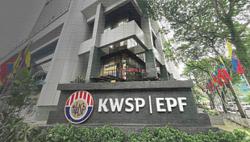Experts: Regular savings more important to grow your EPF
PETALING JAYA: Even a small voluntary contribution into the Employees Provident Fund (EPF) can snowball over time and workers in the informal sectors should not miss out, say financial experts.
The power of “compound interest”, they pointed out, would increase even with the minimum RM10 contribution to EPF.
ALSO READ: EPF continues to be flexible for long-term gains
When a 25-year-old delivery rider with RM500 in his EPF savings diligently makes a RM10 voluntary contribution to his EPF account every month, and with an average EPF interest rate per annum at 5.5%, he will have RM8,400 at 50.
Financial planner Linnet Lee said if a gig worker aged 30 starts saving RM50 a month for a dividend of 5% per annum, he would have RM41,786 when he retires at age 60.
“If he lives until the age of 85 years old, he would have RM140 to spend per month for the next 25 years,” she said in an interview yesterday.
If someone has RM10,000 in his EPF and the government adds RM500 as an initial sum, then based on the above scenario, the worker will have RM88,474 upon retirement and RM295 per month to spend for the next 25 years, she said.
ALSO READ: EPF in for favourable returns on better sentiment
Lee, who is the licensed director of a financial planning firm, said a person who is retiring today at 50 and expects to live the next 25 years relying on public healthcare and living in their own village house will get by with RM500,000 in his EPF savings.
“He will get about RM1,600 to spend per month, provided that he keeps his money in EPF to hedge against inflation and withdraws only the annual amount needed.
“But this is just a ballpark figure. It is best to consult a licensed financial planner for a customised retirement plan,” she said.
Licensed financial planner Rajen Devadason said for every RM500 extra that flows into the EPF account of someone who is 40 now, the compounded amount would be RM1,459 by 60 with a 5.5% compounded annualised growth rate (CAGR).
“If retirement is deferred until 65, then the RM500 deposited into EPF 25 years ago will grow to RM1,907.”
He said Malaysians must consider three factors when figuring out how much we will retire with.
“We must consider the amount we save and invest, so making additional self-contributions into EPF is wise. Then, the length of time we leave the money in EPF and the long-run CAGR that is generated over the investment period,” he said.
Devadason noted that Malaysia will need to raise its official retirement age to at least 65 by 2033 to help deal with the fast-ageing population and inadequate retirement savings.
Earlier this month, the EPF gave a RM500 one-off government additional contribution incentive to 1.4 million members with EPF savings of RM10,000 or less in their Account 1 as of Feb 24, 2023.
Then on Wednesday, the government increased the maximum matching incentive limit for the i-Saraan programme from RM300 to RM500 per year effective Jan 1.
Those who contribute voluntarily will also get a matching incentive of 15% of the voluntary contribution, subject to a maximum lifetime incentive of RM5,000.
Chartered accountant and tax expert Datuk Koong Lin Loong said in the worst-case scenario, any initial amount in the EPF will still grow with no additional savings along the way.
“If the 25-year-old delivery rider did not save monthly, the initial payment of RM500 will grow to RM2,895 when he is 60.
“If he has zero initial amount but begins to put in RM50 monthly, he will have RM67,746 at 60.
“We can see that the compounding effect is different because he had been constantly saving, the interest is compounding at a greater amount each time.”
Koong also lauded the government’s 15% matching incentive for voluntary contributions, as it will encourage people to take the initiative to save up.
“This is better than the one-off lump sum incentive, which could only help so much.
“It is the new era now. We need more long-term measures for workers in the informal sectors, and help those with low savings to have a safety net when they retire.
“This will help the government reduce its financial burden in the future,” he said.













Leave a Reply